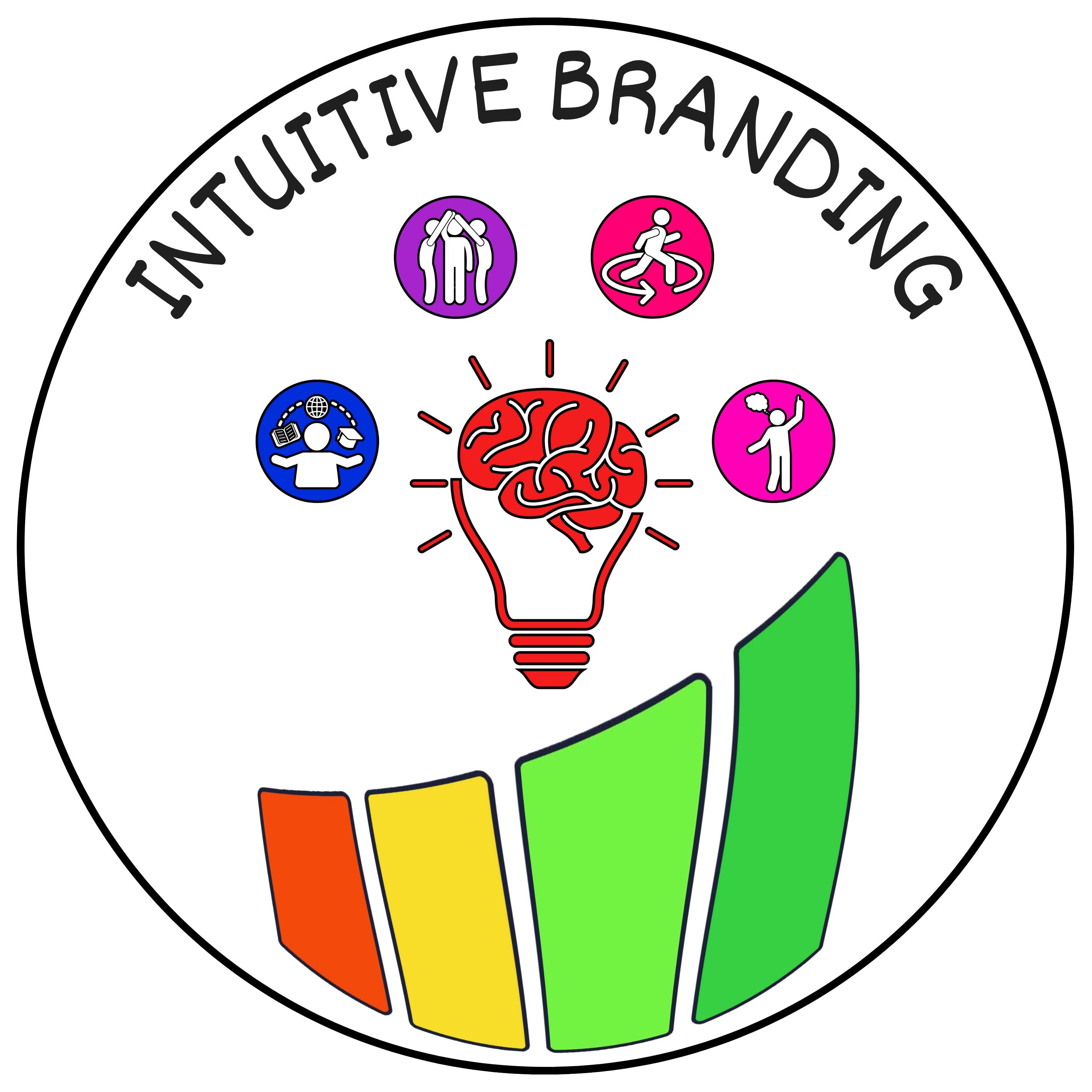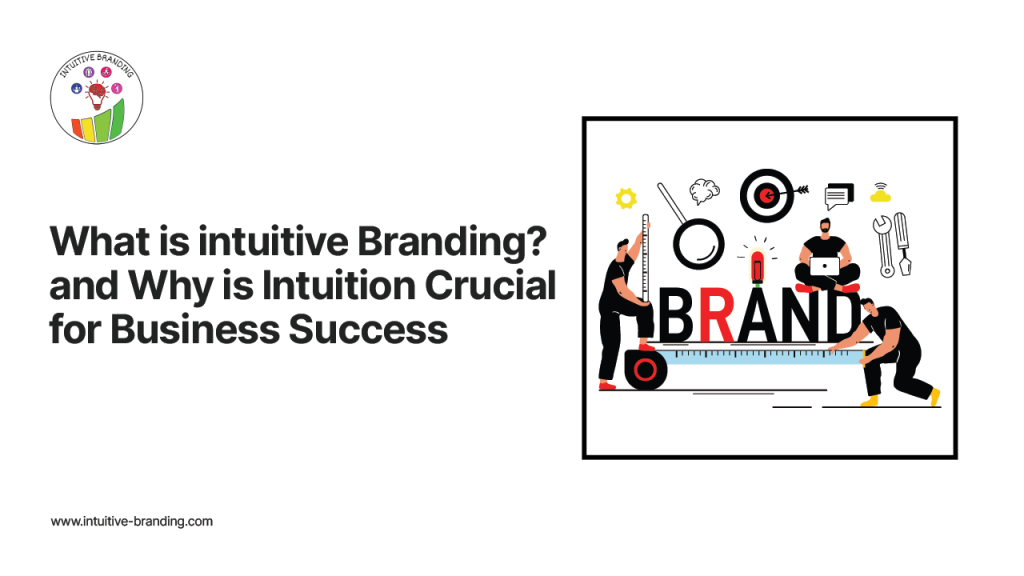What spark of an idea have you felt in the past but not given the space to flourish? And yet, it costs money, time, or even someone’s life.
From a falling apple inspiring the theory of gravity to a garage-built computer revolutionizing technology, history has repeatedly shown how flashes of intuition– when nurtured and developed– can save lives, reshape industries, and redefine the human experience. Ignored, they could lead to costly mistakes that hold back innovation and growth.
Based on numerous studies, including the ones that Coach and Mentor of Intuitive Branding Sunil Godse independently conducted with hundreds of people, there is solid proof that an entrepreneur could build a successful business based on intuitive branding.
You can leverage your intuitive signals to build a phenomenal business even when they go against conventional wisdom. On the other hand, untrained or unnurtured intuition could hinder business growth.
What is Intuitive Branding?
Intuitive Branding is a way of creating a brand that people (your customers and employees) understand, connect with, and trust within milliseconds of interaction.
It is designed to leverage your intuitive signals to identify and capitalize on untapped opportunities within your market, customer base, and workforce –opportunities that others might overlook or not even see.
The science behind this proprietary branding process combines elements of psychology, neuroscience, and consumer behavior research to tap into your subconscious decision-making processes and those of your target audience.
While the techniques may vary depending on the industry, target demographic, and cultural context, the core principle remains consistent: crafting a brand experience that feels natural and instinctively appealing to the intended audience.
When successfully implemented, Intuitive Branding can lead to:
- Enhanced brand recognition and recall
- Strong customer loyalty, driven by emotional connections to the brand
- Increased ability to attract and retain top talent, as employees are drawn to brands they can trust
What is an Intuitive Signal?
An intuitive signal is the unique feeling you feel when making business decisions. Studies show that it usually happens within milliseconds. The signal could be positive or negative. Positive signals tell you to go ahead, while negative signals tell you to back off, evaluate, or get extra information before proceeding.
Common intuitive signals include a feeling of flow, a gut feeling, or a voice in your head. In some of the interviews Sunil conducted on intuitive signals, an individual with two multi-million-dollar businesses realized that he says ‘yes’ to a business decision after feeling an omen on his right shoulder.
Another entrepreneur said his left ear lobe gets hurt when he’s about to make a bad decision. Call them extreme cases.
The value insight is that these scenarios reiterate that intuitive signals aren’t the same for everyone. Regardless of the difference, however intuitive signals are historically and scientifically proven to be powerful tools for making business decisions that spark growth.
How To Use Intuition To Improve Your Business With The Intuitive Branding Process
Incorporating intuitive branding in a business is a process that requires knowledge, practice, and expertise to succeed.
Companies that follow these five steps, as taught by Coach Sunil and his team, have achieved exponential growth, such as moving from earning four hundred thousand dollars in a year to 3.5 million dollars in just two years of implementing the steps.
Step 1: Unlock the Four Types of Intuition
To leverage intuition effectively, you must understand the four distinct types and match each to the appropriate decision-making context. The process involves going through decisions you have made in the past and recognizing the patterns and the intuitive signal that featured those moments.
- Relational Intuition
- Situational Intuition
- Experiential intuition
- Creative intuition
A. Relational intuition
Relational intuition is the skill you need to form the right business partners, especially when you are in a dilemma. We could define it as filtering partnerships, aligning with the advice or nudges of those who will make your business vision a success, and ignoring naysayers. The peak of this example was demonstrated in the story of Grammy-winning artist Karl Wolf.
He had a vision to remix the classic song “Africa,” but many in the music industry opposed this idea. Instead of listening to the naysayers, Karl trusted his intuition and focused on the advice of those who believed in his vision. This decision ultimately led to the creation of his biggest hit song to date.
Relational Intuition is a powerful tool in the Intuitive Branding arsenal. It enables leaders to read subtle emotional cues in customer feedback and employee interactions.
B. Situational Intuition
Situational Intuition is the ability to quickly assess a situation and make decisions based on instincts and experience. It is necessary to distinguish between safe and unsafe (business) environments or decisions. It is also often useful when you need to take new steps, even if it means dismissing protocols.
During a group hike, Peter Katz noticed one member suddenly stop in her tracks while the others forged ahead. Rather than just assuming physical fatigue, Peter’s situational intuition led him to recognize the young woman was dealing with something deeper.
Despite the pressure to keep the group moving, Peter intuitively understood she needed support to work through an underlying emotional issue.
Simply put, situational intuition allows leaders to go beyond surface-level observations and respond appropriately to complex, ambiguous circumstances. It allows entrepreneurs to sense shifting market trends before they become obvious or identify potential threats and opportunities in the business environment.
C. Experiential Intuition
Your Experiential Intuition is activated when you subconsciously apply accumulated knowledge and past experiences to make rapid business decisions in current situations.
Renowned Journalist and Author Malcolm Gladwell popularised several cases of this in his classic Blink, The Power of Thinking Without Thinking.
Notable among them is psychologist John Gottman who can predict within 15 minutes of observation whether a couple will be together in the next 15 years. His 90 percent accuracy on this dates back to decades of experience with observing, studying, and analyzing human relationships.
For business leaders, experiential intuition means drawing on years of experience and internalized knowledge about market patterns and business behaviors to make quick decisions.
D. Creative Intuition
In this situation, you look at the type of risk you’ll be taking. When facing seemingly insurmountable challenges or high-stakes risks, our intuition often guides us toward the path less traveled. This intuitive faculty allows us to see beyond the obvious and identify hidden opportunities that elude more traditionally-minded competitors.
Sunil shares the case study of an investment banker who exemplified this Creative Intuition principle. Despite earning a lucrative 3-4 million dollars annually, this individual followed his intuition and chose to take on the daunting task of reviving a bankrupt restaurant.
Through his unwavering intuitive vision, he transformed that struggling business into a 2 billion dollar enterprise within just 20 years.
In situations like these, breakthrough success does not result from data analysis or the application of established best practices. Rather, it results from the willingness to trust one’s creative intuition, see beyond the obvious, and leap into the unknown.
Step 2: Intuitive Leadership
You might have heard the stats that eighty-five percent of CEOs use intuition when making decisions.
But how should this decision be communicated to the employees who will be the drivers? Stories. “Those who tell stories rule society,” goes Plato’s saying.
Leaders who trust their intuition often excel at communicating brand values in a natural and sincere way. Rather than relying solely on formal statements, they share anecdotes and experiences that embody these values.
This intuitive approach to value communication makes the brand’s principles feel tangible and actionable to employees. It encourages them to embody these values in their work.
Step 3: Intuitive Hiring
Intuitive hiring is about keeping talents who feel trusted and motivated to contribute to your business’s growth. It delves into the subconscious to identify candidates who innately “get” your brand—those whose values, behaviors, and decision-making processes perfectly align with your company’s DNA.
With crystal clear expectations and ongoing support, these employees develop a deep, intuitive trust in your brand, going above and beyond to drive its success. And that creates a ripple effect: When employees intuitively want, the no to work for your company, the customers intuitively want to buy from your brand, and the markets intuitively love your business.
Step 4: Intuitive Sales
Expanding your customer base is always a priority, but true brand mastery lies in cultivating an intuitive loyalty that inspires repeat business.
Intuitive Sales harness the power of the four types of intuition to identify products and services that customers can’t help but gravitate towards, creating an intuitive motivation to spend even more.
The premise is that – As your customers become intuitively attuned to your brand, your revenue and market share will soar.
Step 5: Intuitive Marketing
Intuitive marketing is an approach that feels less like being sold to and more like a relationship. Scientists have long known that emotions play a key role in our choices, sometimes overriding logic. As such, intuitive marketing may (or may not) use data to inform strategy but must certainly prioritize emotional connections throughout the customer journey.
Techniques may include personalized messaging, timely discounts, and emotionally resonant advertisements, all designed to positively influence future consumer behavior.
Final Thoughts: Overcoming the Barriers to Intuitive Branding
While the power of intuition in driving business success is well-documented, harnessing this innate faculty is often easier said than done. Self-imposed psychological barriers can impede an entrepreneur’s ability to effectively leverage intuitive branding.
One of the primary hindrances is fear– the fear of failure, the unknown or uncertainties. Another is ego. Business leaders may be reluctant to embrace an approach that doesn’t fit the typical mold of “rational” strategy.
To overcome these barriers and unlock the full potential of intuitive branding, entrepreneurs must cultivate a deep understanding of their own intuitive signals, develop the courage to trust their instincts and promote a culture that embraces the power of subconscious intelligence.

